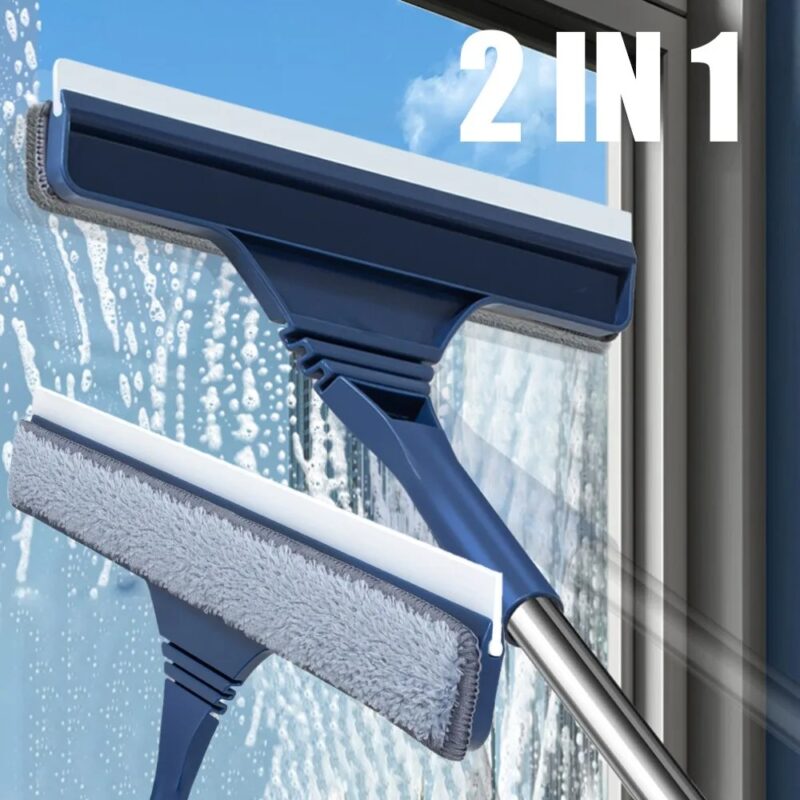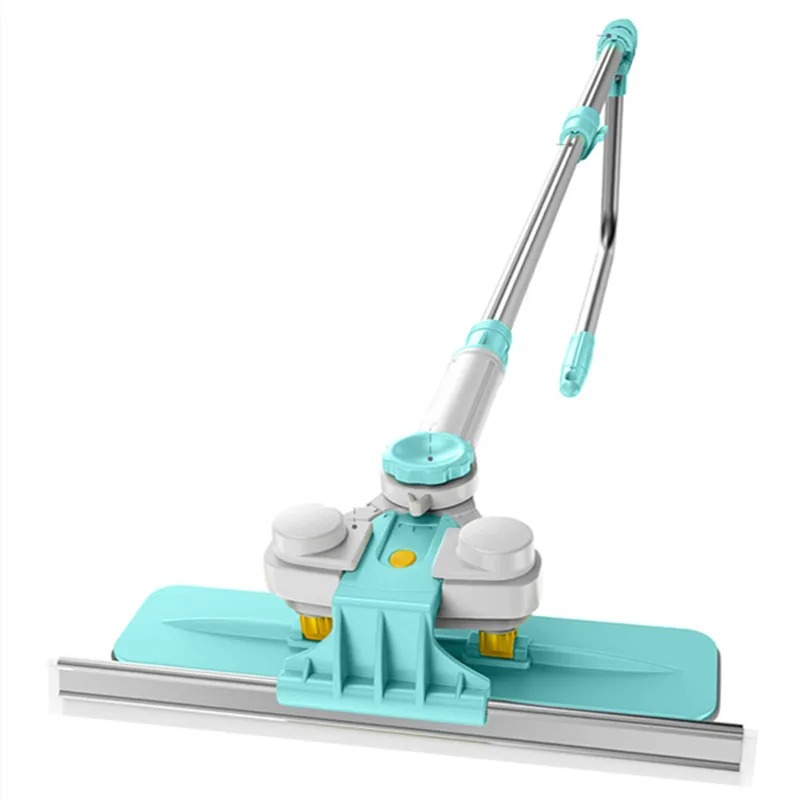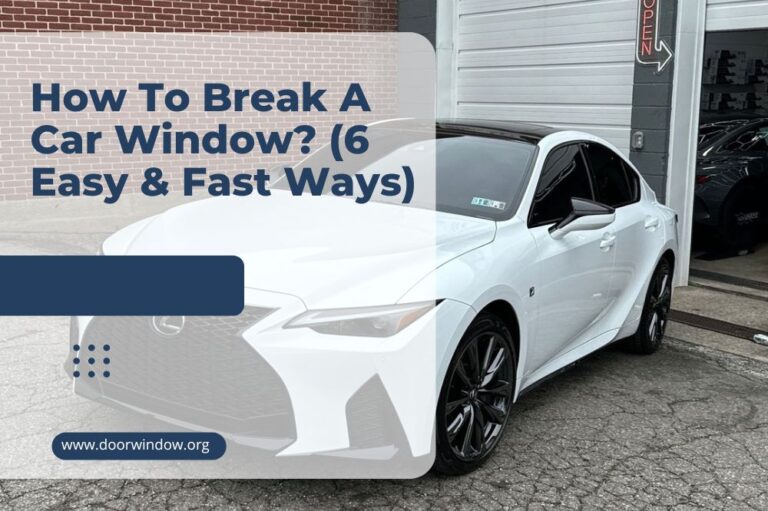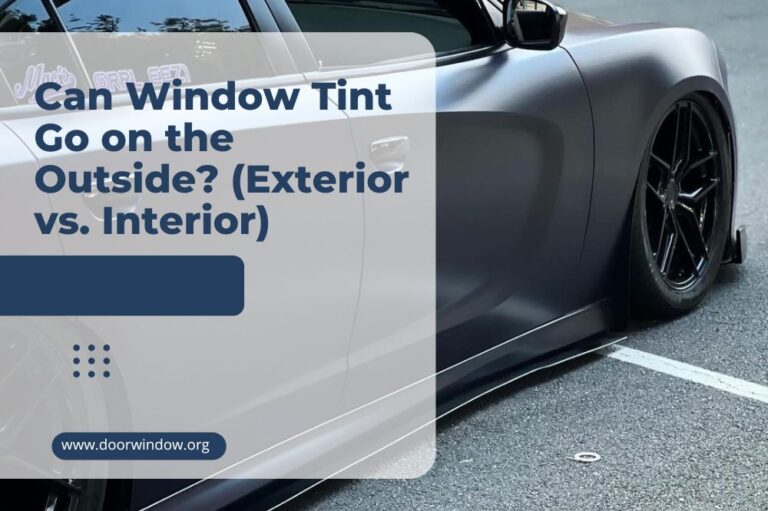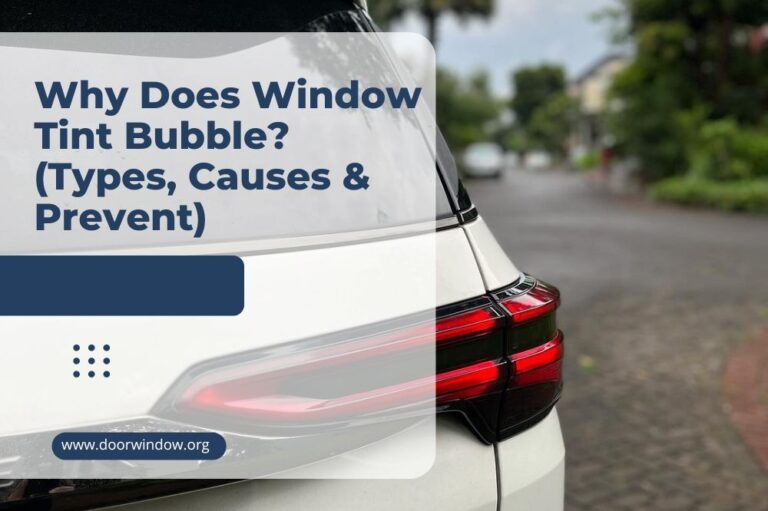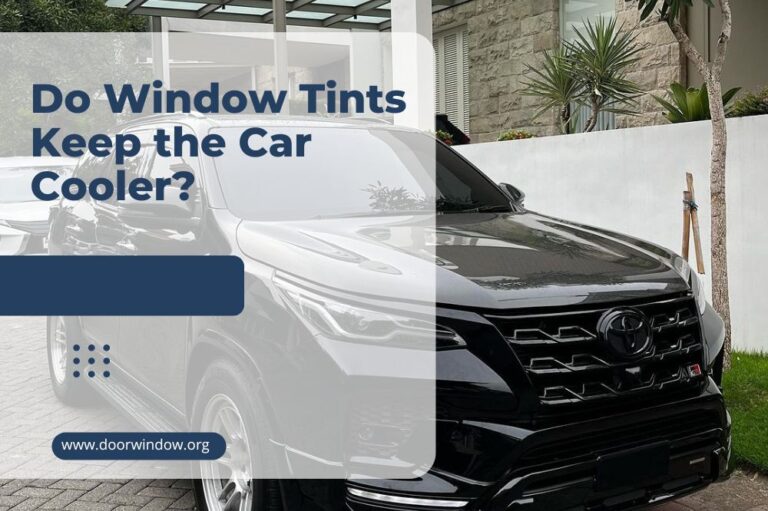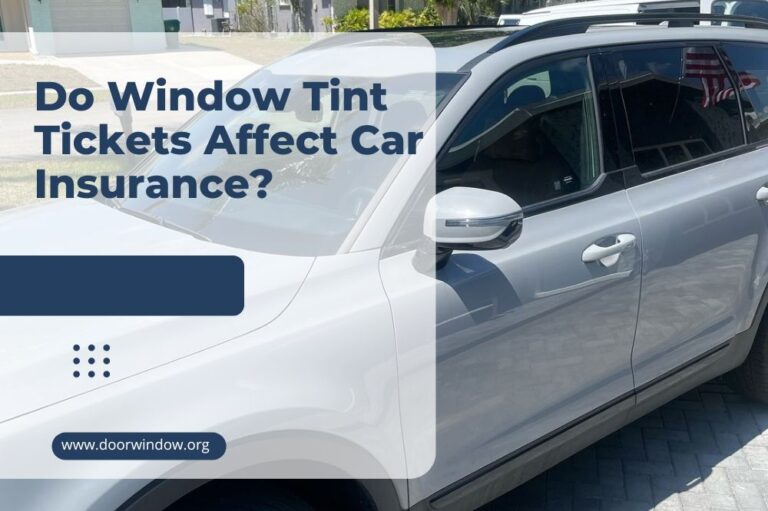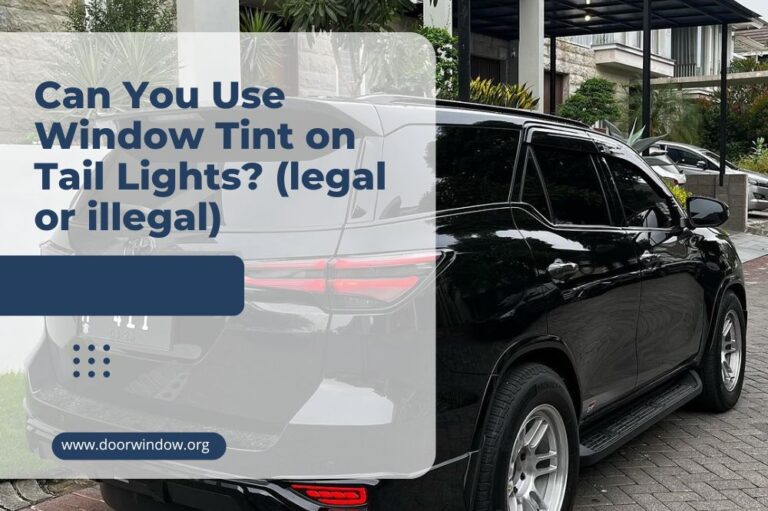Can You Use Windex on Car Windows? (Pros & Cons)
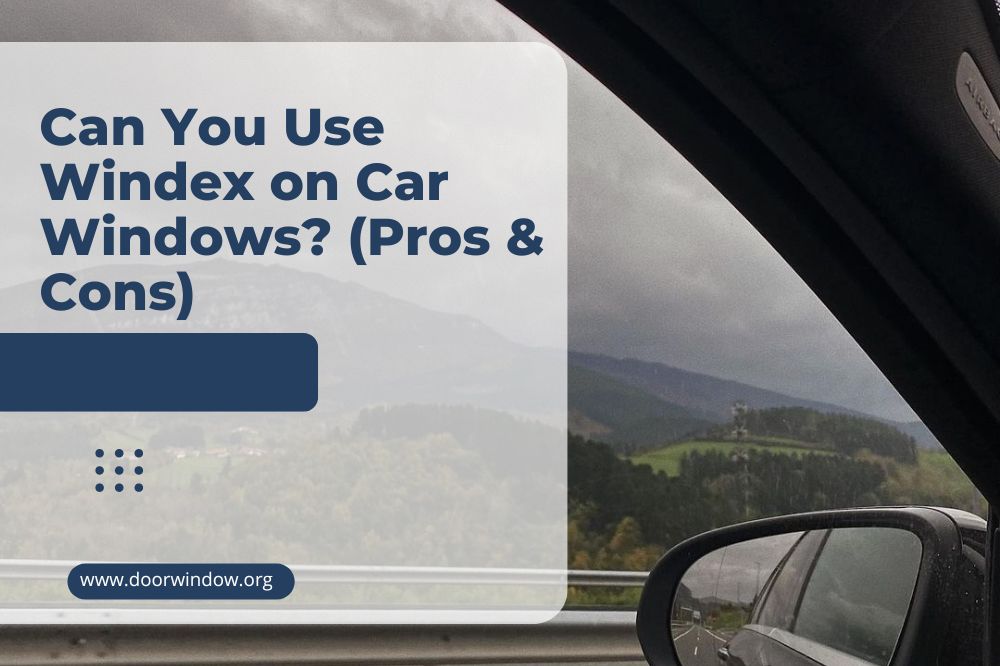
Windex is an efficient and widely used glass cleaning product popular worldwide. It makes home windows clean with a streak-free finish, but the question is, can you use Windex on car windows. Be sure that this question is controversial and that experts disagree about it.
Many are convinced that this cleaner is an excellent option for all vehicle glasses, including the windscreen, as long as you use an ammonia-free version. On the other hand, others believe it can damage automotive windows and bring you many problems, including surrounding car paint damage. Let’s take a look.
What is Windex?
Windex is a water-soluble glass cleaner made of Isopropyl alcohol (Isopropanol) and water that remove dirt from home glass surfaces without leaving annoying stains. Many drivers use this all-purpose cleaner to clean vinyl and plastic parts in cars, but it is an inconvenient product for wood.
Most experts recommend cleaning vehicle’s windows with car shampoo and water as a safe and cost-effective solution. Unfortunately, it is typically too time-consuming for most working drivers.
Windex containing ammonia and ammonia-free version
Many people pick out Windex as a practical and convenient option, unaware they may not have chosen the safest product for their vehicles.
The crucial thing is to understand that Windex is an excellent solution for cleaning home windows but can be harmful to car windows, particularly windscreens designed of specific glass.
Using glass cleaners containing ammonia on automotive glass is dangerous. Inappropriately wiped ammonia attracts dirt, leaves traces over the glass surface, and can linger for a long. That way, it blurs your view of the outside, making this option problematic while driving.
An additional problem with Windex is that not all types are ammonia-free. Unfortunately, regular home-use products typically contain this particular chemical and probably other undesirable compounds that potentially adversely affect automotive glass.
On the other hand, you can use ammonia-free Windex as a safe solution for cleaning your car windows. The company claims that you can use their product on various surfaces, such as:
- Automotive windows, including tinted ones
- Home glass
- Mirrors
- Stainless steel
- Chrome
- Vinyl
- Plastic
The only thing you should worry about is waiting for the car window to become cool and away from direct sunlight. Only that way can you get the best results.
Price
Now, let’s talk about money. A typical Windex bottle’s price is approximately $3 per bottle. Since you need to set aside $4 for an ammonia-free option, it is not such a difference. Basically, you can prevent more expensive consequences for a dollar.
What is Windex Used for?
Windex for cleaning in households
Initially, Windex was an excellent option for cleansing the front porch, household appliances, crystal glassware, countertops, and greasy kitchen surfaces. It was also an ultimate insect repellant.
Its significant limitation was cleaning colored wares since the chemicals this cleaning product contains cause color fading.
Windex for cleaning the glass in cars
At some point, drivers started using ammonia-free Windex for cleaning car windows and removing dirt and ugly stains from their surfaces. Nowadays, many drivers use this cleaner to maintain the vehicle interior, including the dashboard and other plastic parts.
The practical thing is that there is no need for wiping Windex. Once you spray it on the chosen surface, it is enough to let it dry. One of the most practical options is to add it into a water container and spray it on the windscreen by pressing the wiper handle.
That way, you will automatically splash Windex on the windscreen after triggering the spray and wipe it from the glass along with dirt by activating wipers. Unfortunately, experts warn that chemicals this cleaner contains, particularly ammonia, can:
- Dry out and damages rubber moldings
- Damage to the washer system
- Dry out hose that connects spray nozzles with the fluid tank
- Damage washer spray nozzles, placed on the hood and used for spraying the windshield
- Damage rubber wiper blade
- Damage the car paint
Windex for cleaning tinted cars
You need to be careful and buy an ammonia-free product for your car. Otherwise, you will cause too much damage, particularly if you have a vehicle with tinted windows.
It is possible to find evidence that Windex containing ammonia won’t cause damage to the original window tint applied in the factory. On the other hand, using this cleaner on a subsequently installed tint film is not recommended.
Besides possible damage, Windex will leave streaks you can’t remove properly, which may create a glare during the night drive. Therefore, avoiding this chemical for this purpose is probably a wise decision.
Advantages and Disadvantages of Using Windows for Car Cleaning
Windex is a convenient cleaner you can use for maintaining your vehicle, but it is crucial to pick out an ammonia-free version. Before buying, you should be aware of the advantages and downsides of using this product. Let’s see.
Pros
- Ammonia-free Windex won’t leave stains on the glass
- It is an easy-to-use product
- It removes stubborn stains
- Windex is an affordable cleaner
Cons
- Windex containing ammonia will cause your car’s paint fade
- The cleaner will damage rubber parts and leather seats
- You shouldn’t use this product on the window’s inner side
- It often leads to tinted windows fading and breaking
- Ammonia from Windex will cause the paint to peel after direct contact if you mistakenly spill it
Way to Use Windex for Car Windows Cleaning
Cleaning with Windex is effortless and fast, making this product a favorite option for many busy drivers.
It is enough to remove your car from the direct sun and use a microfiber cloth to clean dust from the glass. Then, spray Windex on the window and wipe it thoroughly.
Be careful to clean part by part since dried cleaner leaves streaks on the glass surface. Keep in mind that the only way to get rid of stubborn stains is to spray Windex and let it stay for a while before final cleaning.
When using this chemical to clean the car’s interior, you should avoid spraying it directly on the chosen surface. The better option is to spray Windex on the cloth to prevent possible damage.
Things to Avoid When Cleaning Windshield
Cleaners containing ammonia
There are a few reasons to avoid using common window cleaners, like Windex, to maintain automotive glass, primarily because most contain ammonia. You can expect several problems after applying these products, including:
- They leave streaks – Applying regular glass cleaners to the windshield often ends with a streaky surface that obstructs the view of the roadway.
- They cause glass fogging – Inadequate chemicals may cause trouble with glare and glass fogging, which prevent unobstructed view through the windshield.
- They are an inadequate option for tinted glass – Ammonia-based cleaning products often damage window tint. This chemical breaks down tint over time and causes it to peel.
Other items harmful to automotive glass
Some products you use to clean windows in your home can harm car windows, particularly windshields.
- Sponges – They are not gentle enough for the sensitive windshield and can scratch or even ruin it. Plus, these items damage tinted glass over time.
- Towels – Old hand and bath towels are too rough for car glass surfaces, particularly windshield, so you should avoid them for cleaning. Always use a soft microfiber cloth for that purpose.
Proper Ways to Clean Automotive Glass
The best internal and external car window cleaning options are auto glass cleaners specially formulated for that purpose. Apply chosen product to a soft microfiber cloth and safely remove dirt from the glass surface.
Be careful and follow a procedure to prevent possible glass damage. Plus, take care to avoid the most common mistakes. Let’s see.
Never mix cloths – Use the appropriate microfiber cloth only for wiping the windshield and avoid using it for other purposes. That way, you will prevent greasing the glass with hard-to-remove substances transferred from other surfaces.
Remove car from the direct sun – The only way to prevent the cleaner from quick drying and leaving ugly stains on the glass is to finish all the work in the shade.
Clean windows and mirrors in the end – You should start cleaning windows on your vehicle only after washing and drying your car. It is best to prevent staining the glass with dirt from other surfaces.
Always start with the windshield and keep cleaning in a determined order to get the best possible result. The next are rear windows and clean glass on one side before moving to the other.
Avoid spraying cleaner directly on the glass – Always spray cleaner on the microfiber cloth before applying it on the windshield and other glass surfaces.
Use a pattern – Your goal is to get the best possible result and shiny clean windows. Therefore, you should adopt a moving pattern consisting of horizontal strikes for cleaning the outer window sides and vertical ones for their inner sides.
You can do it in the opposite order, but using different stroke directions is vital to identify residual streaks quickly. Finally, you should clean the wiper blades with other cloth to prevent dirt from transferring.
Summary
Ammonia-based Windex can be harmful to specifically designed car glass, especially windscreen. Plus, it contains harsh chemicals that can strip off the paint from the car’s body.
Therefore, you should consider an ammonia-free variation and other cleaning options, including dish soap solution or white vinegar. They are excellent options for keeping your automotive windows clean.

